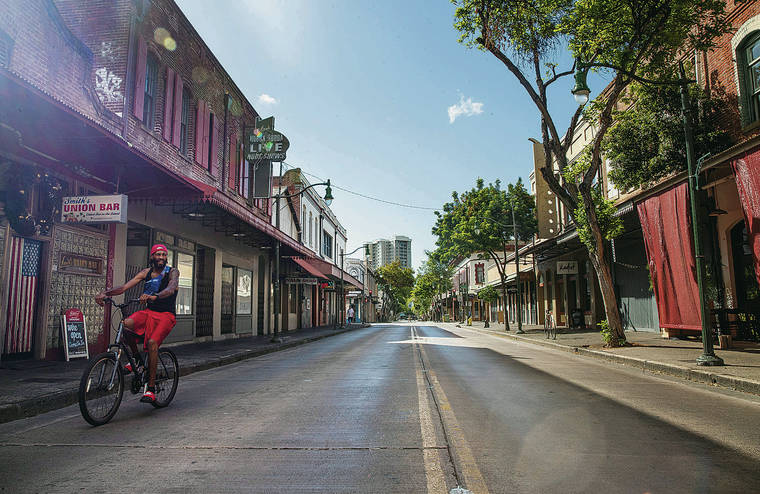Mayor Kirk Caldwell this week announced plans to clean up Chinatown — literally.
Crews will power-wash the sidewalks, remove graffiti, crack down on illegal garbage dumping, plant trees in planter boxes, install brighter lighting at Kekaulike Mall, and cover dull utility boxes with lively art.
Given the years of grief the mayor has endured about the city’s management of the historic district — persistent complaints about piled-up garbage, lack of effective policing, the intractable homeless trashing the neighborhood — it’s hard to blame him for trying to “make Chinatown shine” before his term ends in a few months.
Still, it’s a tall order, even with five-days-a-week power washing. It’s hard to keep the neighborhood sparkling when the hard-core homeless insist on squatting there, some of them on drugs and alcohol benders. And the dumping of trash on the sidewalks is so pervasive it seems almost normal.
But the work must continue. Crews began cleaning sidewalks and bus stops on Wednesday, using disinfectants effective against infectious diseases. The ugly graffiti scarring public buildings will be cleaned off and, Caldwell hopes, replaced with art murals, a la Kakaako, that tell the story of Chinatown and the people who live there. Similar artwork would decorate utility boxes, like those in Kaimuki and Kailua.
As for those piles of garbage, businesses have locking bins and predawn six-days-a-week pickup. If that’s not enough, the city will issue warnings and fines as needed, said Lori Kahikina, the no-nonsense director of Environmental Services.
But all this work could be for naught if the next mayor and the Chinatown community fail to double down on the effort. Especially difficult will be handling the homeless; intensive, persistent outreach will be required to guide them to social services and shelters that, thanks to public outcry, exist mostly outside the neighborhood.
While the gradual transformation of Chinatown from seedy to chic remains a work in progress, there has been progress. A prime example is Hotel Street, once home to the city’s infamous red-light district: On July 11, the street will be closed to buses and converted to a pedestrian- and family-friendly promenade from 5 p.m. to 9 p.m. It’s a variation of the recent Open Street in Waikiki, which drew thousands of people to stroll Kalakaua Avenue. Caldwell hopes the event will draw people to support Chinatown’s popular restaurants and other businesses hit hard by the pandemic.
We hope and expect that people will turn out, but also that they will be safe, wearing masks and practicing proper physical distancing.

